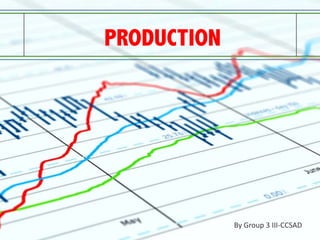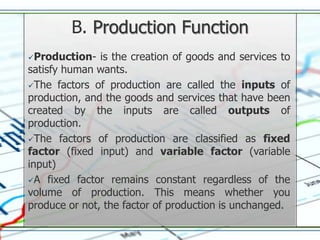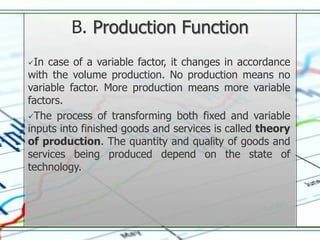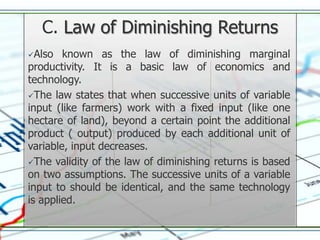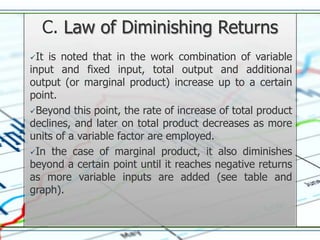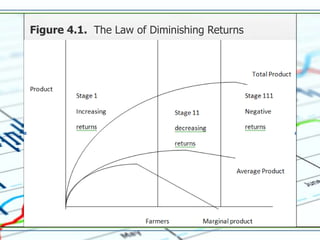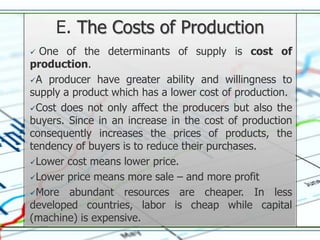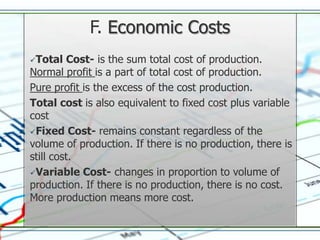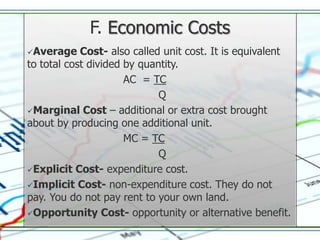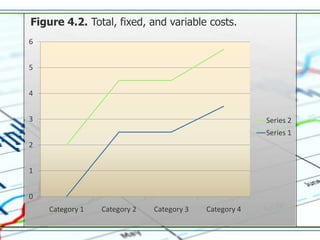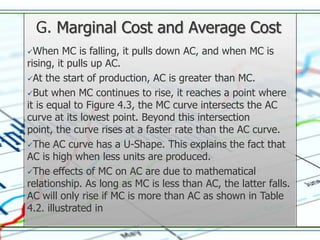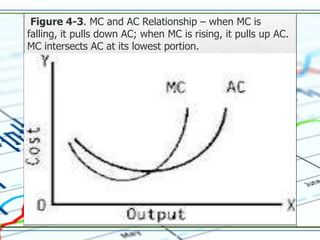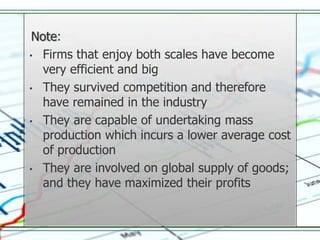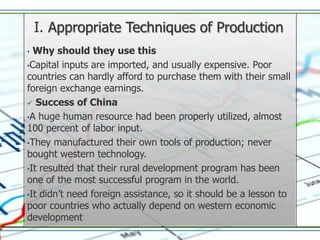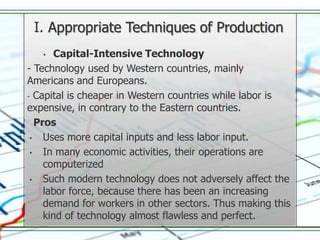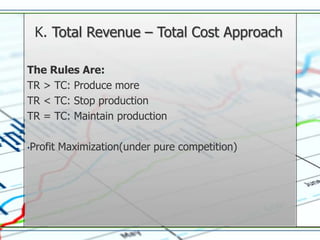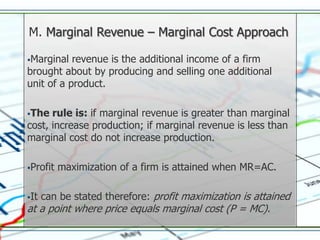This document discusses key concepts related to production including factors of production, production functions, laws of diminishing returns, costs of production, and economies of scale. It defines factors of production as land, labor, capital, and entrepreneurship. Production functions explain how inputs like fixed and variable factors are transformed into outputs. The law of diminishing returns states that beyond a certain point, additional units of a variable input like labor will yield lower marginal products. Costs include total, fixed, variable, average, and marginal costs, and how they relate affects long and short run production. Economies of scale can come from external or internal factors that lower average costs for firms.
